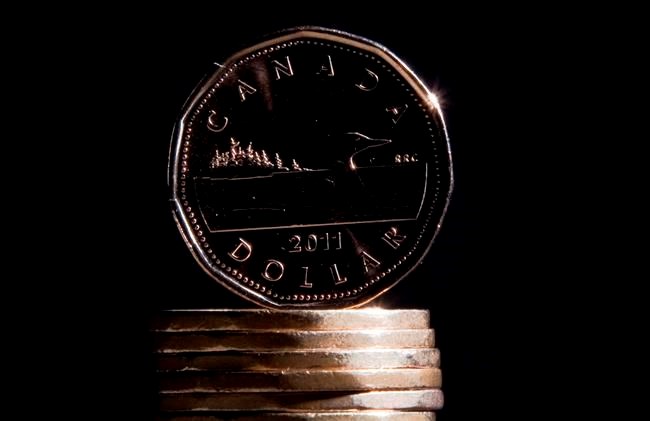TORONTO — The value of the loonie hit a four-month low compared with the U.S. dollar on Wednesday, but some experts say 91įŁ┤┤ consumers shouldn't expect their wallets to take a major hit.
The 91įŁ┤┤ dollar traded at 72.54 U.S. cents on Wednesday, the weakest level in more than five months.
CIBC chief economist Avery Shenfeld said the weak loonie is reflective of the U.S. Federal Reserve getting more aggressive on interest rate hikes while the Bank of Canada holds its key rate steady for the first time in a year.
While import cost hikes could lead to higher prices for items such as groceries, he said the effect on Canada's inflation rate should be minimal.
"This is pretty small potatoes in terms of the inflation rate. We're talking a decimal place here or there," Shenfeld said.
"Even if something is an imported good, the import price doesn't tend to pass on all the exchange rate moves. It tends to show up in things like fresh fruits and vegetables, but if you're talking about a T-shirt at the department store, it was probably made outside North America."
The Bank of Canada held its key interest rate at 4.5 per cent Wednesday based on its assessment of recent economic data. Shenfeld noted the central bank signalled it won't respond to a modest further weakening of the currency.
"Given the choice, I think 91įŁ┤┤s would be happier not to see another rate hike than to protect the 91įŁ┤┤ dollar from another cent or two slide," he said.
Darcy Briggs, senior vice-president and portfolio manager at Franklin Templeton Canada, said he expected the loonie would continue to trade soft until the U.S. Federal Reserve reaches the end of its tightening cycle.
"That's the thing with currencies. They make some pretty dramatic moves pretty [quickly]," he said. "They'll kind of lay in limbo and then volatility spikes."
Briggs said that could make life more expensive in the meantime.
"If the 91įŁ┤┤ dollar is depreciating, and it's depreciating against the number of currency baskets, then any products that we import, by definition, will be more expensive because we're paying it with a cheaper 91įŁ┤┤ dollar," he said.
"That will take a bite out of consumption and it'll actually factor into inflation."
University of Toronto economist Angelo Melino predicted the divergence between the 91įŁ┤┤ and U.S. interest rates to last at least 10 months.
But while the weakened loonie could make products denominated in U.S. dollars, more expensive, Melino said the effect on the 91įŁ┤┤ inflation rate won't be major.
"They're going to matter for specific goods and services," he said.
"If you're planning to go to Florida for vacation, or Disneyland, you're going to see it right away."
Should the 91įŁ┤┤ dollar remain low for an extended period, Melino said that could create a shift in demand away from U.S goods and services toward 91įŁ┤┤ ones.
"Both 91įŁ┤┤s and Americans will be buying goods and services produced in Canada and that tends to be good for 91įŁ┤┤ output, but also inflationary," he said.
This report by The 91įŁ┤┤ Press was first published March 8, 2023.
Sammy Hudes, The 91įŁ┤┤ Press



